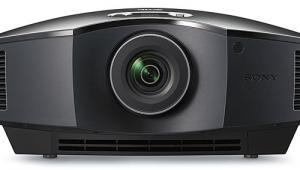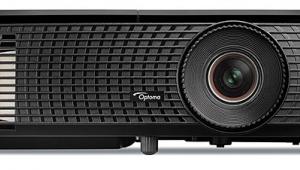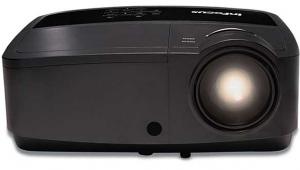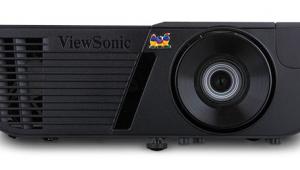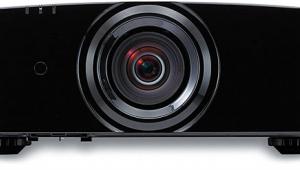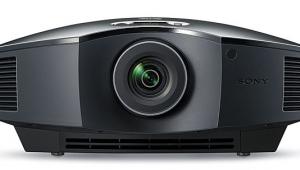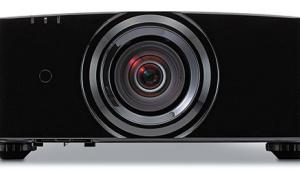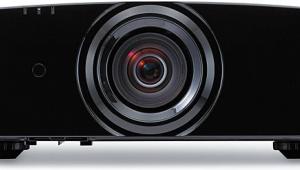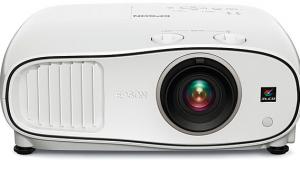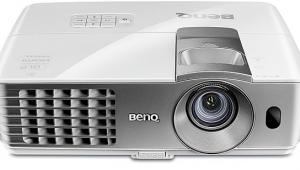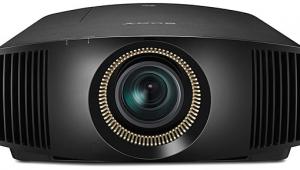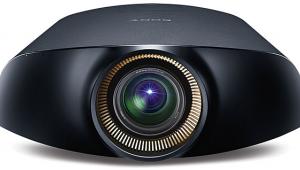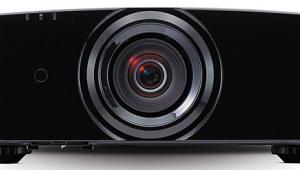JVC DLA-X30 3D LCOS Projector Page 2
 2D Performance
2D Performance
After getting the X30 dialed in, I went through a wide assortment of material over the course of a week or so. All of my viewing was done on a 120-inch diagonal Stewart StudioTek 130 (1.3 gain) white screen. Playback was via an Oppo BDP-95 Blu-ray player fed through an Anthem Statement D2v3D. AudioQuest Coffee HDMI cables and Better Cables Silver Serpent HDMI cables were used for all connections.
2D playback was every bit as good as I remember with the X3. Images had plenty of pop and colors were vivid without looking oversaturated. In Natural color mode, flesh tones were kept in check and never leaned toward red or gold. As you would expect from the JVC line, black levels were to die for. Having just reviewed the new Epson and Sony offerings, it was quite apparent that JVC still owns the market when it comes to how it handles the dark end of the brightness range. Not just for the black floor itself, but also for its great shadow detail and image dynamics. Because the JVC doesn’t use a dynamic iris to achieve its outstanding black levels, there
was no truncation of the white highlights in the image. Using the Low lamp mode provided about 14 foot-lamberts on my 1.3-gain screen with the iris wide open, and this provided rich blacks and plenty of punch regardless of the material I viewed. If I decided to close down the manual iris, blacks were further improved, but this took a hit on the overall brightness of the image. Using the High lamp mode afforded a higher contrast ratio without losing the brightness. But despite the reasonably quiet lamp, I prefer the X30’s nearly silent Low lamp mode.
Using a Minolta T-10 light meter, the highest contrast ratio I could manage from the X30 at a mid-throw distance was about 45,000:1. This was in Low lamp mode with the iris fully closed down. In High lamp mode, I could achieve about 36,400:1, while still maintaining a pretty bright image. But the lowest contrast ratio I measured was only 22,500:1 in High lamp mode with the iris fully open. This is better than we see from most other display technologies, even when they incorporate a dynamic iris system. In Low lamp mode with the iris fully open, I was still able to achieve nearly 30,000:1 with 14 ft-L on my 120-inch screen!
Watching the recent Blu-ray release of Real Steel showcased just how good this projector could look. Black levels were outstanding, but low-level shadow detail never appeared crushed. Colors had lots of pop, but the dynamics of the stark contrast of the image were what impressed me the most. It added to the dimensionality and depth that few projectors I’ve used can match. Detail was every bit as good as any projector I’ve used lately, short of my reference JVC DLA-RS35U, but that model features handpicked components and costs nearly three times as much.
I gave JVC’s Clear Motion Drive a shot. This feature provides frame interpolation for smoother, more detailed motion. I’m typically not a fan of this, as it adds an unnatural look to film motion that can only be described as a soap opera effect. Regardless of the mode I used, I was too distracted by the motion’s unrealistic look. It did work quite well with sports material. JVC also includes some dark-frame-insertion modes that mimic the look of a film projector. This helped with motion as well, but made the image dimmer and with a subtle flicker that was distracting. Obviously, these modes will ultimately be up to the taste of the end user. But like most display enhancements, I found the image was better with them off.
3D Performance
Moving on to the 3D side, I was intrigued about whether JVC’s new glasses and 3D settings would help my languishing opinion of 3D. I was quite impressed by how well JVC managed to pull off 3D playback for a first-generation device with the X3, but it wasn’t perfect and showed some ghosting issues with a variety of titles. Unfortunately, the DLA-X30 didn’t live up to my hopes. Not only was the ghosting I had seen on the X3 still there, it actually appeared to be worse on some discs. One of the biggest offenders was Universal’s Blu-ray release of Despicable Me. This one gave me all kinds of fits on the X3, but surprisingly, it didn’t have any issues on the X7 that we reviewed in the same issue. It was the first disc I popped into the X30, and ghosting was even more pronounced than before. Going into the 3D setup menu and trying to fine-tune it didn’t help, either. None of the adjustments could improve the picture and would merely change where the ghosting would appear in the image.

I looked through quite a bit of 3D material and the performance was about the same or worse than last year’s DLA-X3. Ghosting was obvious with the majority of the titles I played, but the JVC did seem to do better with darker material than the Epson PowerLite Cinema 5010e I also reviewed this month. This was clearly evident with the Blu-ray 3D releases of Bolt and Coraline, both of which feature some very dark and high-contrast imagery. But with brighter material, the Epson was a clear step up from the JVC—Despicable Me being the most obvious—with no artifacts at all during playback. In fact, most of the titles that showed heavy ghosting on the X30 were artifact-free on the Epson 5010e. I also didn’t see this level of ghosting from the Sony VPL-VW95ES. None of these projectors were completely artifact free, but the level I was seeing from the DLA-X30 was the most distracting.
In The End
The 2D picture from the JVC DLA-X30 is truly without peer among the immediate competitors we’ve seen. Its contrast and dynamic range continue to set the bar across all performance levels. The X30 was also the sharpest projector I’ve seen at this price, and was even better than most of the projectors I’ve seen at nearly twice the cost. But
I was disappointed with the 3D performance. I admit I’m not a fan of the technology as a whole, as I feel it impedes the theatrical experience, but the X30 showed more artifacts in playback that further degraded the already gimmicky experience. If 3D is your primary motivator for a new projector, I would look to some other offerings on the market. But if 2D is what you find yourself watching the majority of the time (as I certainly do), this one would be hard to beat at or near this price point, and gets my highest recommendation.
